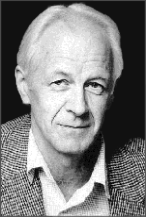Related Research Articles
In human genetics, the Mitochondrial Eve is the matrilineal most recent common ancestor (MRCA) of all living humans. In other words, she is defined as the most recent woman from whom all living humans descend in an unbroken line purely through their mothers and through the mothers of those mothers, back until all lines converge on one woman.
Archaeogenetics is the study of ancient DNA using various molecular genetic methods and DNA resources. This form of genetic analysis can be applied to human, animal, and plant specimens. Ancient DNA can be extracted from various fossilized specimens including bones, eggshells, and artificially preserved tissues in human and animal specimens. In plants, ancient DNA can be extracted from seeds and tissue. Archaeogenetics provides us with genetic evidence of ancient population group migrations, domestication events, and plant and animal evolution. The ancient DNA cross referenced with the DNA of relative modern genetic populations allows researchers to run comparison studies that provide a more complete analysis when ancient DNA is compromised.

Allan Charles Wilson FRS AAA&S was a professor of biochemistry at the University of California, Berkeley, a pioneer in the use of molecular approaches to understand evolutionary change and reconstruct phylogenies, and a revolutionary contributor to the study of human evolution. He was one of the most significant figures in post-war biology; his work attracted a great deal of attention both from within and outside the academic world. He is the only New Zealander to have won the MacArthur Fellowship.
Toomas Kivisild is an Estonian population geneticist. He graduated as a biologist and received his PhD in Genetics, from University of Tartu, Estonia, in 2000. Since then he has worked as a postdoctoral research fellow in the School of Medicine, at Stanford University (2002-3), Estonian Biocentre, as the Professor of Evolutionary Biology, University of Tartu (2005-6), and as a Lecturer and Reader in Human Evolutionary Genetics in the Department of Archaeology and Anthropology at the University of Cambridge (2006-2018). From 2018 he is a professor in the Department of Human Genetics at KU Leuven and a senior researcher at the Institute of Genomics, University of Tartu.
Molecular anthropology, also known as genetic anthropology, is the study of how molecular biology has contributed to the understanding of human evolution. This field of anthropology examines evolutionary links between ancient and modern human populations, as well as between contemporary species. Generally, comparisons are made between sequences, either DNA or protein sequences; however, early studies used comparative serology.
Haplogroup T is a human mitochondrial DNA (mtDNA) haplogroup. It is believed to have originated around 25,100 years ago in the Near East.
Haplogroup I is a human mitochondrial DNA (mtDNA) haplogroup. It is believed to have originated about 21,000 years ago, during the Last Glacial Maximum (LGM) period in West Asia. The haplogroup is unusual in that it is now widely distributed geographically, but is common in only a few small areas of East Africa, West Asia and Europe. It is especially common among the El Molo and Rendille peoples of Kenya, various regions of Iran, the Lemko people of Slovakia, Poland and Ukraine, the island of Krk in Croatia, the department of Finistère in France and some parts of Scotland and Ireland.
In human mitochondrial genetics, haplogroup E is a human mitochondrial DNA (mtDNA) haplogroup typical for the Malay Archipelago. It is a subgroup of haplogroup M9.

In human mitochondrial genetics, Haplogroup Y is a human mitochondrial DNA (mtDNA) haplogroup.
The following outline is provided as an overview of and topical guide to genetics:
The various ethnolinguistic groups found in the Caucasus, Central Asia, Europe, the Middle East, North Africa and/or South Asia demonstrate differing rates of particular Y-DNA haplogroups.
The human mitochondrial molecular clock is the rate at which mutations have been accumulating in the mitochondrial genome of hominids during the course of human evolution. The archeological record of human activity from early periods in human prehistory is relatively limited and its interpretation has been controversial. Because of the uncertainties from the archeological record, scientists have turned to molecular dating techniques in order to refine the timeline of human evolution. A major goal of scientists in the field is to develop an accurate hominid mitochondrial molecular clock which could then be used to confidently date events that occurred during the course of human evolution.

In paleoanthropology, the recent African origin of modern humans or the "Out of Africa" theory (OOA) is the most widely accepted model of the geographic origin and early migration of anatomically modern humans. It follows the early expansions of hominins out of Africa, accomplished by Homo erectus and then Homo neanderthalensis.
The multiregional hypothesis, multiregional evolution (MRE), or polycentric hypothesis, is a scientific model that provides an alternative explanation to the more widely accepted "Out of Africa" model of monogenesis for the pattern of human evolution.

The tables below provide statistics on the human Y-chromosome DNA haplogroups most commonly found among ethnolinguistic groups and populations from East and South-East Asia.
Listed here are notable ethnic groups and native populations from the Oceania and East Indonesia by human Y-chromosome DNA haplogroups based on relevant studies.
Rebecca L. Cann is a geneticist who made a scientific breakthrough on mitochondrial DNA variation and evolution in humans, popularly called Mitochondrial Eve. Her discovery that all living humans are genetically descended from a single African mother who lived <200,000 years ago became the foundation of the Out of Africa theory, the most widely accepted explanation of the origin of all modern humans. She is currently Professor in the Department of Cell and Molecular Biology at the University of Hawaiʻi at Mānoa.

The 2022 Nobel Prize in Physiology or Medicine was awarded to the Swedish geneticist Svante Pääbo "for his research in the field of genomes of extinct hominins and human evolution". It was announced by Thomas Perlmann, secretary of the Nobel Assembly at Karolinska Institutet in Stockholm, Sweden, on 3 October 2022.
Brigitte Pakendorf is a South African linguist and geneticist at the French National Centre for Scientific Research (CNRS).
References
- ↑ Wilkins A (27 January 2012). "The scientists behind Mitochondrial Eve tell us about the "lucky mother" who changed human evolution forever". On the Human. Gawker Media 2013. Retrieved 2013-05-03.
- 1 2 "Mark Stoneking: Curriculum Viate". Max Planck Institute for Evolutionary Anthropology. Max Planck Gesellschaft. 2 January 2012. Archived from the original on 14 March 2013. Retrieved 2013-05-03.
- ↑ Cann RL, Stoneking M, Wilson AC (1987). "Mitochondrial DNA and human evolution". Nature. 325 (6099): 31–36. Bibcode:1987Natur.325...31C. doi:10.1038/325031a0. PMID 3025745. S2CID 4285418.
- ↑ Vigilant L, Stoneking M, Harpending H, Hawkes K, Wilson AC (September 1991). "African populations and the evolution of human mitochondrial DNA". Science. 253 (5027): 1503–1507. Bibcode:1991Sci...253.1503V. doi:10.1126/science.1840702. PMID 1840702.
- ↑ Stoneking M (2009). "Human origins. The molecular perspective". EMBO Reports. 9 (Suppl): S46–S50. doi:10.1038/embor.2008.64. PMC 3327540 . PMID 18578025.
- ↑ Whitfield J (20 August 2003). "Lice genes date first human clothes". Nature News. Nature Publishing Group. doi:10.1038/news030818-7 . Retrieved 2013-05-04.
- ↑ Kittler R, Kayser M, Stoneking M (2003). "Molecular evolution of Pediculus humanus and the origin of clothing". Current Biology. 13 (16): 1414–1417. doi: 10.1016/S0960-9822(03)00507-4 . PMID 12932325.
- ↑ Hillmer AM, Freudenberg J, Myles S, Herms S, Tang K, Hughes DA, Brockschmidt FF, Ruan Y, Stoneking M, Nöthen MM (2009). "Recent positive selection of a human androgen receptor/ectodysplasin A2 receptor haplotype and its relationship to male pattern baldness". Human Genetics. 126 (2): 255–264. doi:10.1007/s00439-009-0668-z. PMC 3774421 . PMID 19373488.
- ↑ Kenny EE, Timpson NJ, Sikora M, Yee MC, Moreno-Estrada A, Eng C, Huntsman S, Burchard EG, Stoneking M, Bustamante CD, Myles S (2012). "Melanesian blond hair is caused by an amino acid change in TYRP1". Science. 336 (6081): 554. Bibcode:2012Sci...336..554K. doi:10.1126/science.1217849. PMC 3481182 . PMID 22556244.
- ↑ Stoneking M (21 December 2009). "Does Culture Prevent or Drive Human Evolution?". On the Human. National Humanities Centre. Archived from the original on 30 June 2013. Retrieved 2013-04-30.
- ↑ Nasidze I, Quinque D, Rahmani M, Alemohamad SA, Stoneking M (2006). "Concomitant replacement of language and mtDNA in South Caspian populations of Iran". Current Biology. 16 (7): 668–673. doi: 10.1016/j.cub.2006.02.021 . PMID 16581511.
- ↑ IMDb (2013). "Mark Stoneking: Filmography". Internet Movie Database. IMDb.com, Inc. Retrieved 2013-04-30.